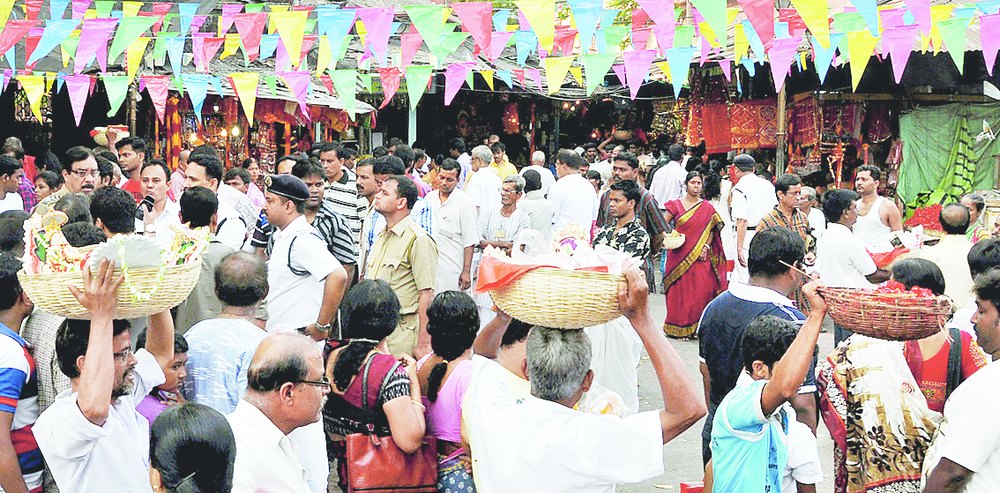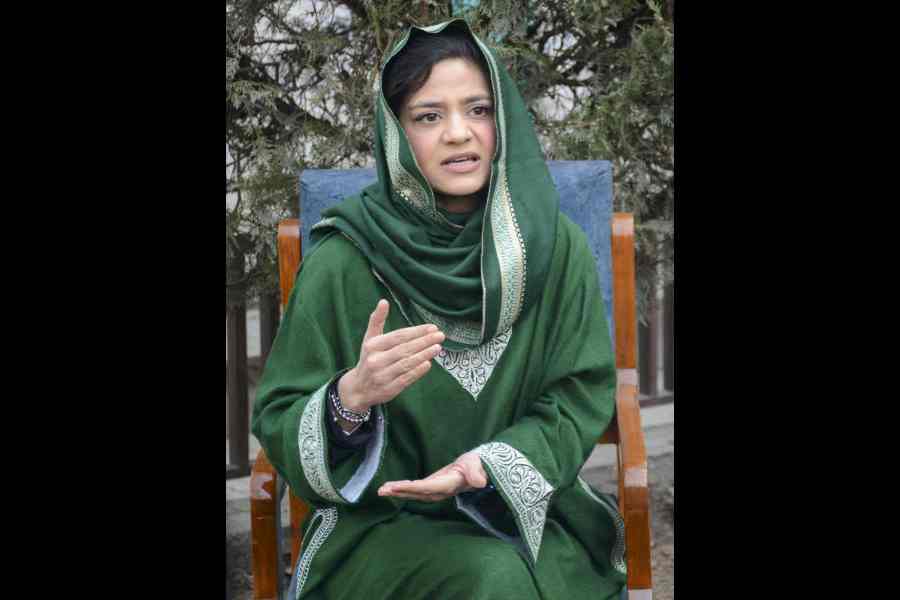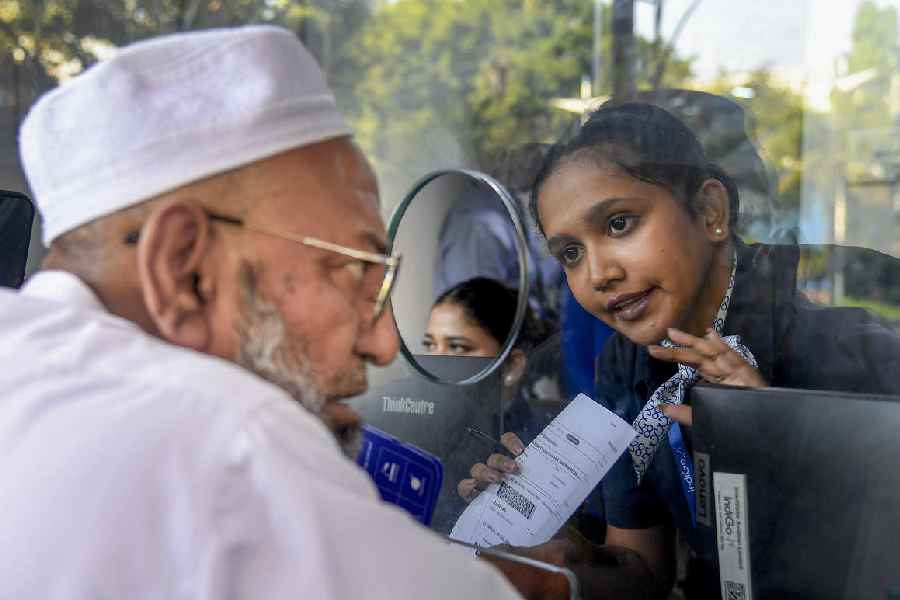
SLEEPING ON JUPITER By Anuradha Roy, Hachette, Rs 499
There is a sketch of a unique Eden, complete with the smell, colour and juiciness of grapefruit, in the first few paragraphs of the chapter entitled "Before the First Day" in Anuradha Roy's novel, Sleeping on Jupiter. Perfect in its idyllic contentment, and like a child's painting, the scene splinters violently with the entry of men with axes who brutally murder the man of the house, the 'father' of the child's memory. She remembers how he is kicked about, "as if a limp bundle of clothes was being tossed this way and that", how his head is split open with the axe's blow and something written in his blood upon the wall of their two-room hut. Her brother is taken away and her mother escapes with her in silent terror. Eden is never recovered in the rest of the story, even though most of the characters are on different journeys in search of various kinds of fulfilment or escape, during the course of which they converge in one place - the seaside temple town of Jarmuli.
The memory of beauty and violence in childhood in the first chapter belongs to Nomita Frederiksen or Nomi, an Indian girl adopted by Norwegian parents. In the novel, hers is clearly a journey of reassessment, if not of recovery and even of redemption. She comes to Jarmuli ostensibly with the task of making a documentary film on the temple town. The readers discover that her private agenda is to find out what has become of the ashram where she spent part of her orphaned childhood under the aegis of a well-known holy man. If she can locate the place, that is.
On the way to Jarmuli she shares her train compartment with three elderly women, Gouri, Vidya and Latika, friends on a trip on their own for the first time in their lives. Some of Roy's most humorous, compassionate and realistic writing is inspired by these three. The train sequence in the chapter "The First Day", in which comparative peace is shattered by a sharp glimpse of male sexual aggression directed at Nomi on a wayside platform, culminating in disquiet, fear and a sense of loss, anticipates the rhythms of the novel's interactions. The novel is about eight days of experience in Jarmuli, and the last chapter, "The Eighteenth Day", offers a kind of closure, for Nomi and the readers, even if an imperfect one.
Roy's gift of story-telling and her unerringly culled language disguise at first glance the episodic structure of the novel. The narrative moves fast, with sharply imaged scenes and strange encounters. The place itself is an ingredient in the quality of the encounters. The temple is a setting and a goal, meaning different things to different people. More powerful is the presence of the sea, from which rises the mysterious monk - or does he? - and in which Nomi looks for her mother, and Badal, the temple guide, for a way to touch the universe and sleep on Jupiter, under its sixteen moons. For Roy's readers, these are expected pleasures. But in many ways, the structure of this novel is a departure from that of her first two. The tale is fragmented into the consciousnesses, memories, unequal encounters and intended or unintended absences of the different characters whose lives touch and disperse untidily in the chaotic seaside town. First-person narration is limited to Nomi's memories of her childhood in the ashram and her sullen growing up in Norway, which makes past horrors, its brief happinesses, terrified betrayals and painful friendships crowd in on the reader's perception of Nomi's present.
While the reader can follow the ways in which Vidya and Latika reason or respond, the consciousnesses of others are sporadically glimpsed, and in some cases left opaque. Since the occasional glimpses and the opacity - the first in the case of Suraj, the photographer, for example, and the second in the case of Johnny Toppo, the tea-stall owner - obviously help the plot, there may be some discomfort here about the use of authorial licence. Yet such unequal presentation can be meaningful: that is demonstrated by the wavering dynamics between the temple guide, Badal, whose mind is laid out for the reader, and Raju, the tea-stall boy, who remains impenetrable. Their prolonged encounter illustrates the ultimate and inevitable failure of communication that undermines the relationships in the novel, a failure suggested in the narrative's deployment of fragmented points of view.
Communication gradually breaks down when memory disintegrates, as happens with Gouri, the most gentle of the three elderly friends. She becomes mysterious, unpredictable. Memory and its mysteries make up one of Roy's favourite themes, and in this novel too, Nomi's exploration is less of the temple town than of memory's uncertain terrain. Its uncertainty is never more daunting than in her encounter with Johnny Toppo.
What may - or may not - have hovered between Nomi and Johnny are memories of hideous violence in the ashram, sexual, psychological and brutally physical. Although the story receives its first impetus from a scene of butchery, possibly political, with an unnamed war hovering on the horizon of consciousness, it is the deeply perverse violence in the ashram that is the primary source of the sense of evil in the book. The first sentence of Nomi's story refers to a war. The war is always there, erupting in violence outside and within, particularly in human encounters, in desire, love, rage, domination, hatred and lust. The novel lays bare the many forms of violence against women and children India is used to, yet Roy's women appear to be unbeaten: they are hardy, spirited and eager for life.
Is there too much of it? Each violent moment is acutely imagined, yet - perhaps because Roy is responding to the innumerable stories of violence we read about every day - there is often the sense of the vaguely familiar, the almost predictable, at too many moments. There is too much truth; the artful structure of fiction cannot bear so much of it.
But violence is not merely the instrument in Roy's reiterated theme of alienation and breakdown, it is also seen as part of the religious package, whether in the ashram or in the tourist-filled temple town. Roy has pulled no punches. In this the writer's vision far transcends the episodic and reaches a deeper truth that is, perhaps, difficult to present with such clearness at this time.










